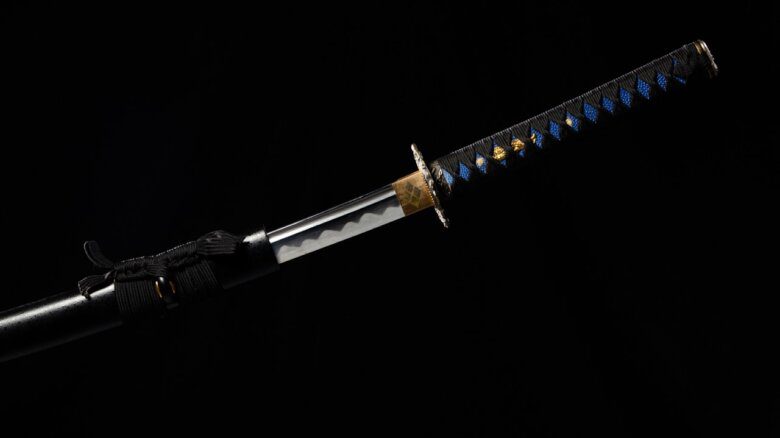When the clubs reopen, I’ll be getting down to k.d. lang.
The Grammy award-winning icon of lesbianism dropped their latest album last week, and it’s as close to club bangers as you can expect from the Canadian crooner. The aptly titled Makeover brings together various remixes of lang’s most popular songs of the 1990s—as well as a few deep cuts—for the first time.
But it may also be a farewell.
“I think I might be done,” lang said in an interview last week. “I’m not 100 percent sure, but it kind of feels like I may have exhausted my interest in the music business. I don’t think I would tour again. I mean, this is subject to change. But it’s been a while. It’s been a few years that I’ve been feeling this.”
If lang (who recently started using she/they pronouns on social media) really is done, she leaves behind a legacy worth noting. From literally creating the soundtrack for the beating heart of lesbian yearning to producing groundbreaking cultural coming-outs, you’ll be hard-pressed to find a limit to their impact.
Here are five iconic moments to reflect on.
1988: The year it all changed
Born in Edmonton and raised in Consort, Alberta, lang’s career started to take off in the mid-1980s. In 1985, they won “Most Promising Female Vocalist” at the Juno awards—a prize they accepted in an iconic wedding dress ensemble. In 1988, she was selected to perform at the Winter Olympics in Calgary. That same year—and arguably most important—lang was named Chatelaine’s “Woman of the Year.”
With the headline “Yippee-I-O k.d.!” the magazine introduced lang as a “country crooner” with a “don’t-mess-with-me tomboy alto.” Lang’s gender-bending style, pushing back against the sparkly skirts of country singers of that moment and foreshadowing their coming out, was on full display. (A year later, they would win both “Female Vocalist of the Year” and “Country Female Vocalist of the Year” at the Junos.)
Chatelaine’s recognition would inspire one of lang’s most famous hits, “Miss Chatelaine.” In the song, lang contemplates how someone like her could be bestowed such an honour, and constructs a character of the hyper-feminine Chatelaine cover girl. They even donned full drag for the video, giving a wink and a nod to the gendered expectations set out for her.
1992: Coming out and Ingenue
Lang came out as a lesbian in June 1992 in an interview with The Advocate magazine. The move predated Ellen Degeneres’s infamous “Yep, I’m gay!” Time magazine cover by six years, and skyrocketed lang into being the world’s most visible lesbian.
The confirmation came on the tail of their release of Ingénue, which would go on to be nominated for a slew of Grammy Awards and give us the quintessential anthem of lesbian pining, “Constant Craving.” The entire album captures lang’s unrequited love of a married woman—a trope now, but groundbreaking back then.
When asked in a 2019 interview if they recognized that their coming out had opened the doors for other celebrities to come out, lang said she did, “although I try not to take huge credit for that because it’s not a competition.
“It’s something bigger than all of us. I am certainly proud, but at the same time, I’m just one of many. Gay culture isn’t just one sliver of humanity—it’s a huge cross-section of people.”
1993: The Vanity Fair cover
In 1993, lang appeared on another magazine cover, this time for Vanity Fair. The image shows lang seated in a barber’s chair, butch and dressed to the nines, with supermodel Cindy Crawford sensually shaving their face.
“She bends gender clichés, seducing audiences with each breathtaking performance. k.d. lang—born on the Canadian Prairie, exiled from Nashville’s country-music clique—has skyrocketed to pop stardom with her sensuous platinum album, Ingénue,” the article’s introduction reads.
The cover pushed lang and her transgressive butchness even further into the mainstream. It’s a moment captured in lesbian history forever. On a personal note, I will point out that my girlfriend does have a tattoo of the cover, proving that us millennial gays definitely respect our elders.
2008: The last new material
Following their heyday in the ’90s, which saw collaborations, movie soundtracks and wide-ranging success, lang’s career quieted down in the aughts. Their last new material came in the form of collaborations, including, in 2002, an album of Grammy-lauded duets with Tony Bennett, and the 2016 album case/lang/veirs with Neko Case and Laura Veirs. Lang’s last original studio album, Watershed, was released in 2008.
Watershed was quiet and reflective, drawing on lang’s growing relationship with Buddhism and their understanding she might be in the twilight of their career. Fittingly, a long period of silence followed with only a few collaborations and commemorations for Ingénue’s 25th anniversary in between.
“I love to sing, and I love people respecting my art, but in terms of pursuing more fame, that definitely does not hold interest for me,” lang said in the 2019 interview. “I’ve experienced it, and I’ve reached certain pinnacles that for me are very satisfying, so I don’t feel in want, that’s for sure.”
2021: k.d. lang’s Makeover and their sunset
On what they suggest could be a final turn in Makeover, lang shows off the breadth of her cultural influence, remixed for both new fans and old. The album veritably slaps, showing off unfamiliar versions of some of lang’s greatest hits, and brings the tempo up to perfect dancing levels. A swoony slow jam like “Miss Chatelaine” becomes a rhythm-driven dance track; a DJ Krush remix of “Sexuality” turns the song into a throbbing soundtrack for a night of deviance.
The cover art features a previously unseen 1995 portrait of lang by photographer David LaChapelle, adorned in a blue gown and seated at a drum kit. It’s a moment caught in time, 26 years ago, where lang was at the height of their popularity.
A lot has changed since she first burst onto the scene: the queers of today ask about sexuality by seeing if “she listens to Girl in Red,” and former child stars like JoJo Siwa are pioneering a new brand of coming out. Demi Lovato, one of the biggest pop stars in the world, is non-binary. Bisexuality, pansexuality and non-binary genders are finally being talked about and supported in ways they weren’t way back when lang came out as a lesbian in the early ’90s.
lang may be riding off into the sunset, but she leaves behind a legacy worth celebrating. We don’t need to make them over—Miss Chatelaine’s legacy is here to stay.


 Why you can trust Xtra
Why you can trust Xtra


